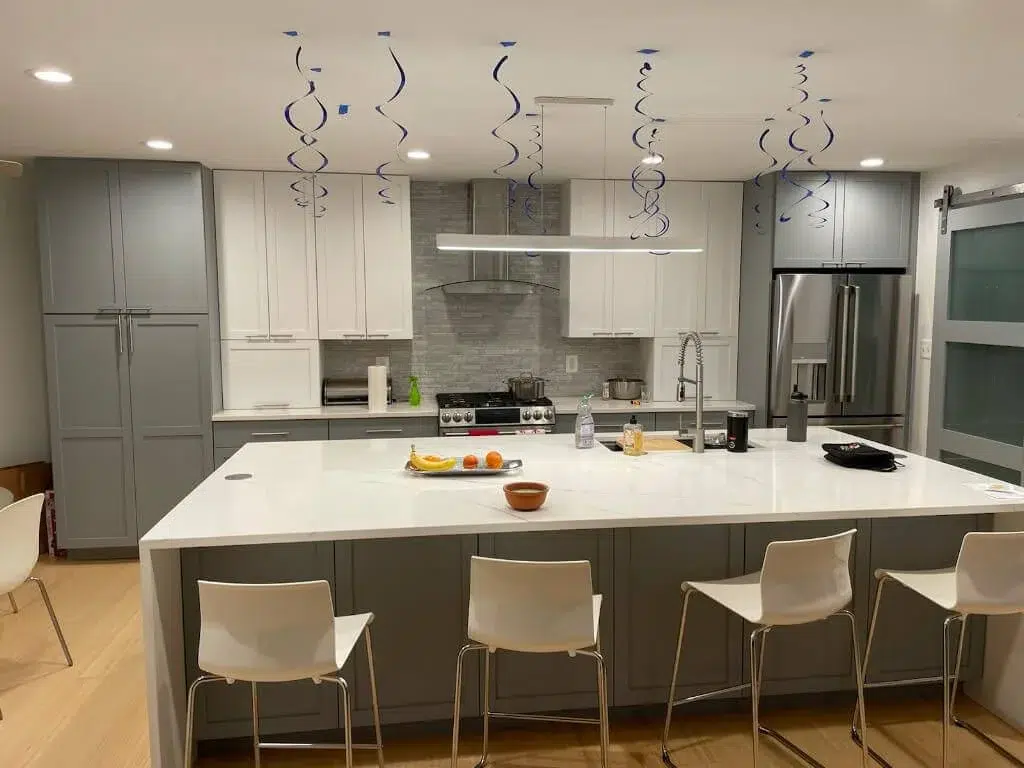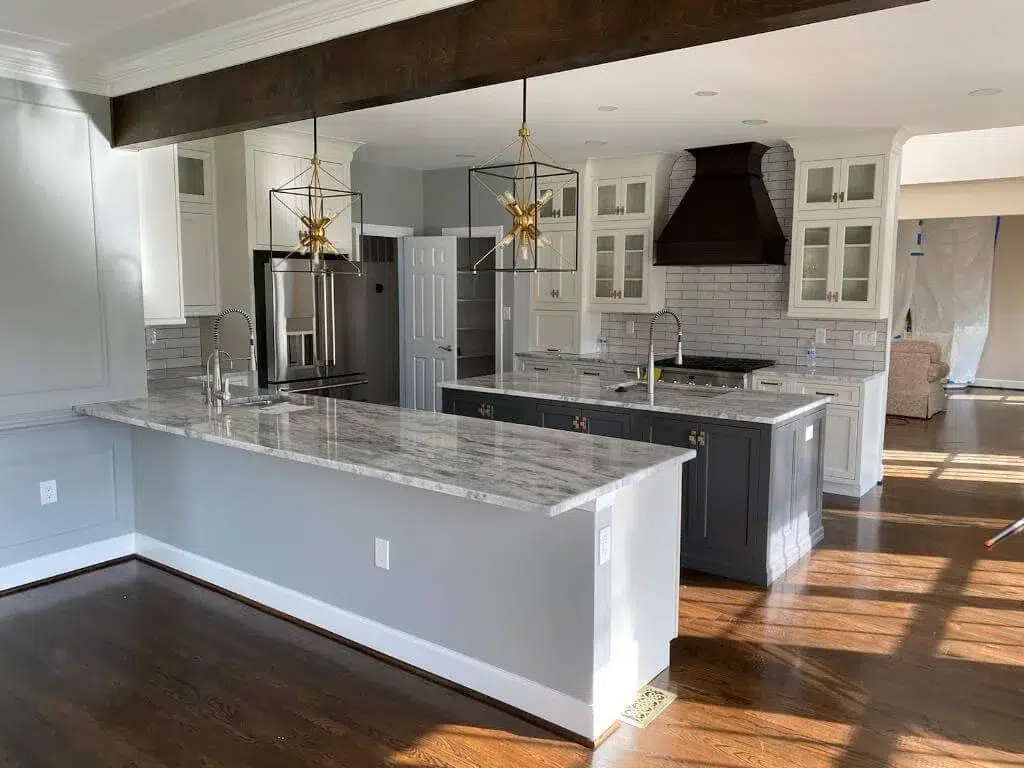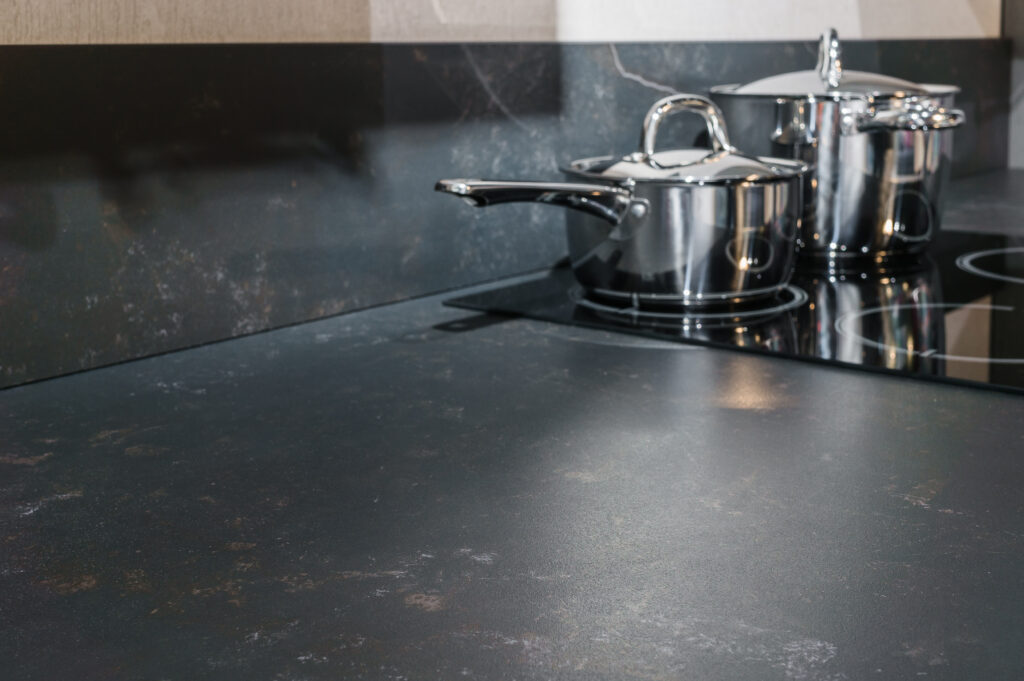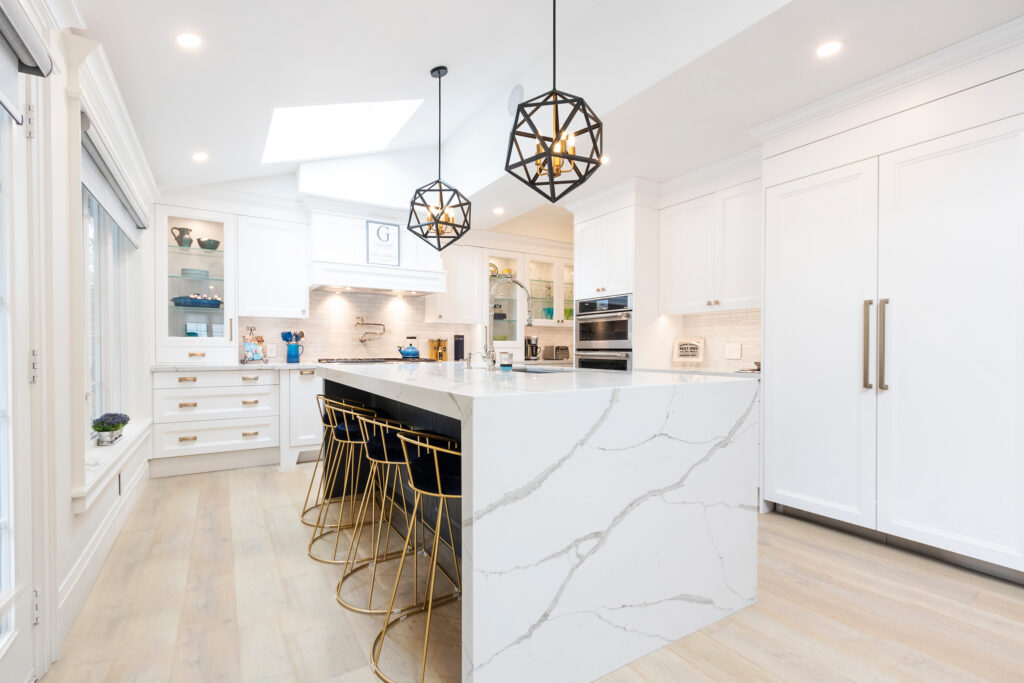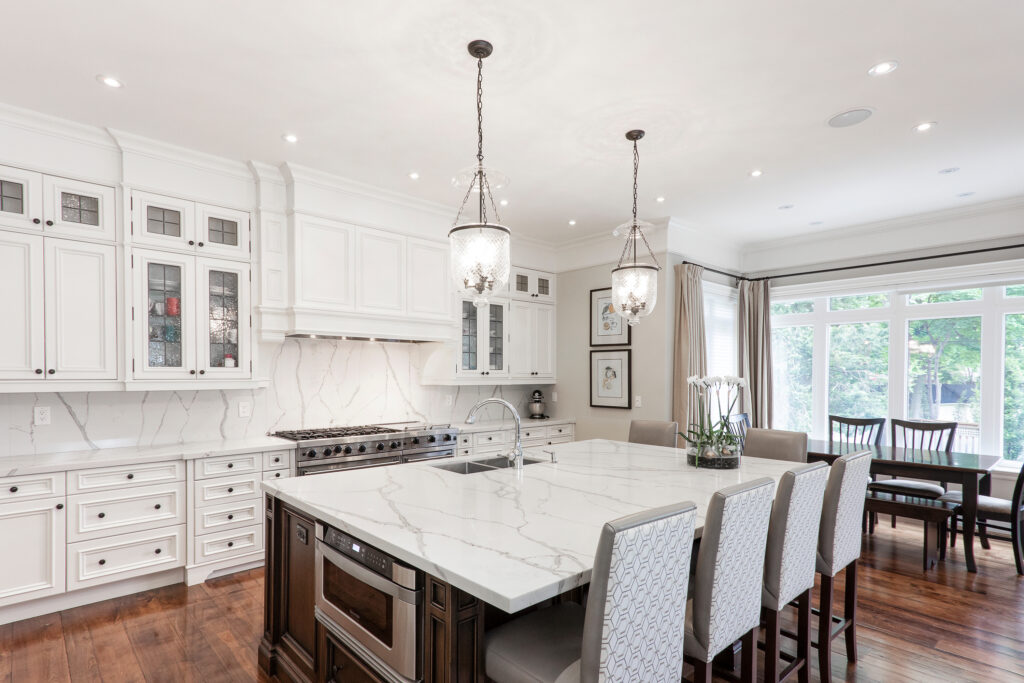Leathered granite countertops are a stylish and practical option for homeowners seeking a unique and sophisticated look for their kitchens. The leathered finish is achieved by applying a diamond-tipped brush to the granite’s surface, resulting in a textured appearance with a matte finish. This process enhances the stone’s natural colors and patterns, giving it a more organic and distinct look compared to polished granite.
Pros and Cons of Leathered Granite:
To help you make an informed decision, here’s a summary of the pros and cons of leathered granite countertops:
The leathered finish offers several benefits, such as:
Hiding fingerprints and smudges:
The matte texture of leathered granite helps conceal fingerprints and smudges, making it an excellent choice for busy kitchens.
Slip resistance:
The textured surface provides better grip, reducing the risk of accidents in the kitchen.
Easy on the eyes:
Leathered granite’s non-reflective surface is less likely to cause glare, making it easier on the eyes and visually appealing.
What is the Downside to Leathered Granite?
While leathered granite countertops have many advantages, there are some downsides to consider. These include:
Limited color options
Leathered granite typically comes in darker colors, such as black or deep brown, which may not suit everyone’s taste or home décor.
More expensive than polished granite:
Leathered granite can be pricier than polished granite, making it a less budget-friendly option.
Difficulty in cleaning:
Leathered granite’s textured surface can make it more challenging to clean than a polished surface, as dirt and bacteria can get trapped in the small crevices.
Is Leathered Granite More Expensive?
Leathered granite countertops tend to be more expensive than their polished counterparts. The reason for this price difference lies in the specialized process of creating the leathered finish, which requires more time and labor. However, the unique look and feel of leathered granite can make it worth the additional cost for many homeowners.
Is Leathered Granite Hard to Maintain?
Despite the textured surface, leathered granite is relatively low-maintenance. The leathering process helps to seal the granite’s pores, making it less susceptible to stains and water damage. However, it is essential to keep in mind that the textured surface can make cleaning more challenging, as crumbs and dirt can become lodged in the crevices. Regular cleaning with a gentle cleanser and a soft cloth can help keep your leathered granite countertops looking their best.
Is Leathered Granite Better?
Leathered granite has its advantages and disadvantages, making it difficult to declare it as universally better than other options. Some of the benefits of leathered granite include:
Unique appearance: The textured surface of leathered granite adds depth and character to your countertops.
- More resistant to fingerprints and smudges: Leathered granite’s matte finish is less likely to show fingerprints and smudges than polished granite.
- Enhanced slip resistance: The textured surface provides better grip and slip resistance than polished granite, making it a safer option for busy kitchens.
Ultimately, whether leathered granite is “better” depends on your personal preferences and priorities.
Is Leathered Granite Still Popular?
Yes, leathered granite remains a popular choice for homeowners due to its unique appearance, durability, and resistance to stains and water damage. While it may not be as widely used as polished granite, leathered granite continues to be a sought-after option for those looking to add a touch of sophistication and character to their kitchens.
How to Maintain?
To keep your leathered granite countertops looking their best, follow these maintenance tips:
- Clean regularly: Use a gentle cleanser and a soft cloth to clean your countertops daily or as needed. Avoid abrasive cleaners or scouring pads, as they can damage the surface.
- Seal the surface: Although leathered granite is less porous than other finishes, it’s still essential to seal the surface to protect against stains and water damage. Consult your countertop provider for specific sealing recommendations.
- Address spills promptly: Wipe up spills immediately to prevent stains from setting in.
- Use trivets and cutting boards: Protect your countertops from heat and scratches by using trivets for hot pots and pans and cutting boards for chopping and slicing.
What is the Most Popular Granite Finish?
Polished granite remains the most popular finish for granite countertops. Its smooth, glossy surface reflects light, adding a luxurious and elegant touch to any kitchen. Polished granite is also easy to clean and maintain, which makes it a practical choice for busy households. However, leathered and honed finishes have been gaining popularity as homeowners seek more unique and personalized options for their countertops.
What is the Most Expensive Type of Granite?
The price of granite can vary significantly based on factors such as color, rarity, and origin. Some of the most expensive types of granite include:
Blue Bahia:
A stunning blue granite from Brazil with a unique pattern, Blue Bahia can cost up to $400 per square foot.
Van Gogh:
This rare granite features a dramatic swirling pattern that resembles a Van Gogh painting. Prices can reach $300 per square foot or more.
Lennon:
A high-end granite with a striking blue and gold pattern, Lennon can cost around $200 per square foot.
Keep in mind that the cost of granite can also be influenced by factors such as the quality of the slab, the complexity of installation, and the finish applied to the stone.
Color Options for Leathered Granite
Leathered granite, while limited in color options, offers a variety of shades within its darker color palette. Some popular choices include:
- Black leathered granite countertops: A classic and sophisticated option, black leathered granite adds depth and elegance to any kitchen design. The textured surface enhances the stone’s natural beauty, making it an attractive choice for modern and traditional styles alike.
- White leathered granite countertops: Although rarer than black leathered granite, white leathered granite countertops can create a stunning visual contrast in your kitchen. The subtle texture adds interest and dimension to the lighter stone, making it an ideal choice for those looking to make a statement.
- Brown leathered granite countertops: A versatile option, brown leathered granite countertops can seamlessly blend with various kitchen designs, from rustic to contemporary. The warm tones in the stone complement wood cabinetry and create a cozy, inviting atmosphere.
Comparing Leathered Granite to Other Finishes:
In addition to leathered granite, there are other finishes you may want to consider for your countertops:
- Honed granite: Honed granite has a matte finish that is similar to leathered granite but without the textured surface. This finish is ideal for those who prefer a softer, more understated look in their kitchen.
- Brushed granite: Brushed granite features a slightly textured surface that is created by brushing the stone with a wire brush. This finish gives the granite a rustic, weathered appearance, making it an excellent choice for farmhouse or country-style kitchens.
- Flamed granite: Flamed granite is created by exposing the stone to high heat, causing the surface to become rough and textured. This finish is ideal for outdoor applications, such as patios and outdoor kitchens, where slip resistance is crucial.
By considering the advantages and drawbacks of each finish, you can make an informed decision about which option best suits your needs and design preferences.
Leathered granite countertops offer homeowners a unique and sophisticated option for their kitchens. While they may be more expensive than polished granite and slightly more challenging to maintain, their distinct appearance, durability, and resistance to stains and water damage make them a popular choice. By considering the pros and cons, costs, and maintenance requirements, you can determine if leathered granite is the right choice for your home.

